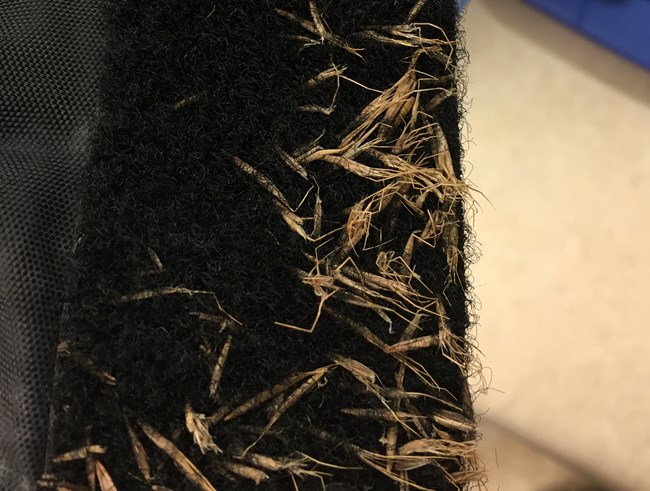Last updated: April 11, 2022
Article
Managing Invasive Grasses at Northern Great Plains Parks
National parks preserve natural and historical landscapes and the wildlife that depend on them. Success is measured in terms of healthy, natural ecosystems with a variety of plants and animals native to the region.
Invasive species are plants or animals not native to a region that cause ecological harm by outcompeting native plants and animals for limited resources. Two annual brome grasses from Europe and Asia – cheatgrass (Bromus tectorum) and Japanese brome (Bromus japonicus) – often impact grassland environments of parks in the northern Great Plains and throughout the Intermountain west.
Data collected over the past 23 years in northern Great Plains parks show that annual bromes constitute up to 30% of the plant community in some parks.
Invasive Plants Don't Play by the Rules
A feature of high-quality grasslands is a high number of native species growing within a small space. Annual bromes ‘cheat’ native plants by using soil moisture and nutrients early in the year before the native plant species have sprouted. Each plant can produce hundreds of seeds. Invaded patches appear brown among the green grasslands during the summer months because the annual bromes grow – and die – earlier than most of the other grasses on the landscape.
Annual bromes reduce grassland health in many ways. By displacing the plants important to pollinators such as bumble bees, butterflies, and beetles, their presence can have a cascade effect on the local food chain. Bromes are also poor forage for grazing wildlife. They offer little digestible material, and the dry seeds have sharp tips that can cause sores in the mouths and on the feet of mammals.

Adapting to Change Through Adaptive Management
Natural processes such as wildlife grazing and fire are preferred approaches to controlling exotic invasive species, but additional actions are often required. The NPS partnered with researchers at the United States Geological Survey to build the Annual Brome Adaptive Management (ABAM) framework to help managers of northern Great Plains parks use “real-time” data and science to make cost-effective invasive species management decisions.
Adaptive management embraces a somewhat experimental approach to managing invasive bromes. Managers define management objectives, consider several strategies to achieve those objectives, collect and assess data before and after management actions, and use the information gained from past efforts to improve future management decisions, which provides managers of northern Great Plains parks with cost-effective management options based on “real-time” data and science.
ABAM parks use a mathematical model to predict outcomes of different management actions. Possible actions include prescribed fires, herbicide applications, or a combination of the two. Although tightly controlled, scientific experiments provide valuable information about which action might work best, real-world management doesn’t always get the same results as those experiments because of different weather, plant species, and soil types. Adaptive management and the ABAM model take all these into account. As managers implement, monitor, and assess the outcomes of these actions in a variety of circumstances over time, the model’s predictions will get better.

Learning by Doing, Together
Adaptive management is often defined as ‘learning by doing’. The ABAM model ‘learns’ from the outcomes of management actions completed every year, and its output provides managers the most up-to-date information available. Implementing management actions within the parks takes time, resources, and coordination among many NPS groups. With time and collaboration among northern Great Plains parks, a healthy and diverse grassland environment will be part of each park’s future, not just the past.
Be Part of the Solution
Park visitors can help prevent invasive species problems in many ways, both at the park and at home:
-
Check your shoes, gear, pets, and vehicles for seeds as you hike or travel, especially before you enter or leave a new recreation site. Remove seeds and put them in the trash.
-
Purchase weed-free hay for your livestock and horses.
-
Use only local firewood to keep from transporting insects that attack plants.
-
Learn to identify the most problematic species in your home region and wherever you’re travelling.
-
Before buying a new plant for your yard, do a quick internet search to see if it’s invasive.
-
Support prescribed fire efforts and inform yourself about the importance and benefits of prescribed fire within northern Great Plains ecosystems.
Visit www.playcleango.org for more ways to care for our public lands.
